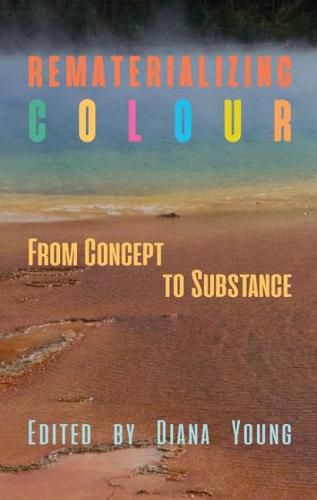Readings Newsletter
Become a Readings Member to make your shopping experience even easier.
Sign in or sign up for free!
You’re not far away from qualifying for FREE standard shipping within Australia
You’ve qualified for FREE standard shipping within Australia
The cart is loading…






This title is printed to order. This book may have been self-published. If so, we cannot guarantee the quality of the content. In the main most books will have gone through the editing process however some may not. We therefore suggest that you be aware of this before ordering this book. If in doubt check either the author or publisher’s details as we are unable to accept any returns unless they are faulty. Please contact us if you have any questions.
Colour is largely assumed to be already in the world, a natural universal that everyone, everywhere understands. Yet cognitive scientists routinely tell us that colour is an illusion, and a private one for each of us; neither social nor material, it is held to be a product of individual brains and eyes rather than an aspect of things. This collection seeks to challenge these assumptions and examine their far-reaching consequences, arguing that colour is about practical involvement in the world, not a finalized set of theories, and getting to know colour is relative to the situation one is in - both ecologically and environmentally. Specialists from the fields of anthropology, psychology, cinematography, art history and linguistics explore the depths of colour in relation to light and movement, memory and landscape, language and narrative, in case studies with an emphasis on Australian First Peoples, but ranging as far afield as Russia and First Nations in British Columbia. What becomes apparent, is not only the complex but important role of colours in socializing the world; but also that the concept of colour only exists in some times and cultures. It should not be forgotten that the Munsell Chart, with its construction of colours as mathematical coordinates of hues, value and chroma, is not an abstraction of universals, as often claimed, but is itself a cultural artefact.
$9.00 standard shipping within Australia
FREE standard shipping within Australia for orders over $100.00
Express & International shipping calculated at checkout
This title is printed to order. This book may have been self-published. If so, we cannot guarantee the quality of the content. In the main most books will have gone through the editing process however some may not. We therefore suggest that you be aware of this before ordering this book. If in doubt check either the author or publisher’s details as we are unable to accept any returns unless they are faulty. Please contact us if you have any questions.
Colour is largely assumed to be already in the world, a natural universal that everyone, everywhere understands. Yet cognitive scientists routinely tell us that colour is an illusion, and a private one for each of us; neither social nor material, it is held to be a product of individual brains and eyes rather than an aspect of things. This collection seeks to challenge these assumptions and examine their far-reaching consequences, arguing that colour is about practical involvement in the world, not a finalized set of theories, and getting to know colour is relative to the situation one is in - both ecologically and environmentally. Specialists from the fields of anthropology, psychology, cinematography, art history and linguistics explore the depths of colour in relation to light and movement, memory and landscape, language and narrative, in case studies with an emphasis on Australian First Peoples, but ranging as far afield as Russia and First Nations in British Columbia. What becomes apparent, is not only the complex but important role of colours in socializing the world; but also that the concept of colour only exists in some times and cultures. It should not be forgotten that the Munsell Chart, with its construction of colours as mathematical coordinates of hues, value and chroma, is not an abstraction of universals, as often claimed, but is itself a cultural artefact.